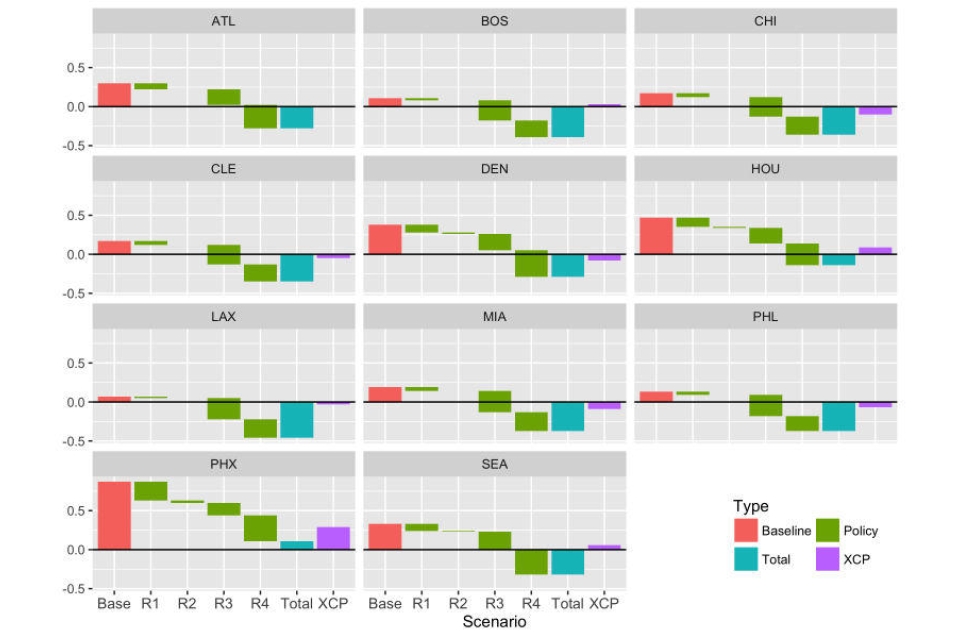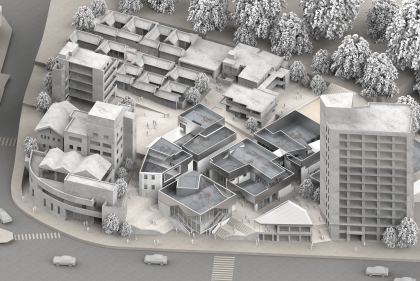November 30, 2017
To Drop CO2 Emissions, Look to Local Transportation and Housing

Penn and MIT researchers looked to the housing sector as one way localities could impact greenhouse gas emissions. These graphs showcase a sequential comparison of 2030 residential energy-conservation scenarios for 11 metro areas. Red represents the baseline. The other three colors signify different scenarios, with and without the Clean Power Plan. In the best-case option, CPP stays in place and cities adopt energy-conservation standards for new homes and retrofitting standards for existing home. Then emissions could potentially drop by 46 percent, on average.
Close
Penn and MIT researchers looked to the housing sector as one way localities could impact greenhouse gas emissions. These graphs showcase a sequential comparison of 2030 residential energy-conservation scenarios for 11 metro areas. Red represents the baseline. The other three colors signify different scenarios, with and without the Clean Power Plan. In the best-case option, CPP stays in place and cities adopt energy-conservation standards for new homes and retrofitting standards for existing home. Then emissions could potentially drop by 46 percent, on average.

 Expand Image
Expand Image

